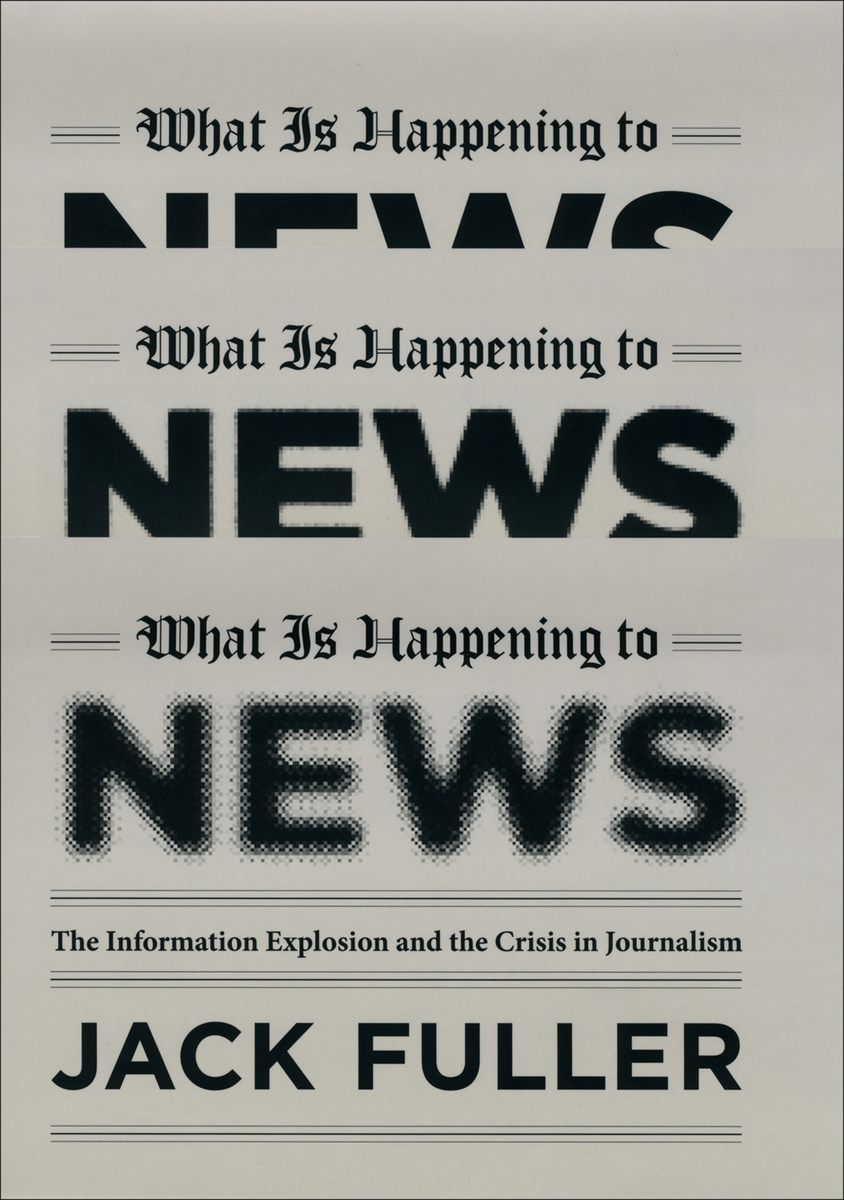Cloth: 978-0-226-26898-9 | Paper: 978-0-226-00502-7 | Electronic: 978-0-226-26899-6
DOI: 10.7208/chicago/9780226268996.001.0001
AVAILABLE FROM
University of Chicago Press (cloth, paper, ebook)Apple Books
Barnes & Noble Nook
Chegg Inc
ebrary
EBSCO eBooks (formerly NetLibrary)
Google Play
OverDrive
ABOUT THIS BOOK
Across America, newspapers that have defined their cities for over a century are rapidly failing, their circulations plummeting even as opinion-soaked web outlets like the Huffington Post thrive. Meanwhile, nightly news programs shock viewers with stories of horrific crime and celebrity scandal, while the smug sarcasm and shouting of pundits like Glenn Beck and Keith Olbermann dominate cable television. Is it any wonder that young people are turning away from the news entirely, trusting comedians like Jon Stewart as their primary source of information on current events?
In the face of all the problems plaguing serious news, What Is Happening to News explores the crucial question of how journalism lost its way—and who is responsible for the ragged retreat from its great traditions. Veteran editor and newspaperman Jack Fuller locates the surprising sources of change where no one has thought to look before: in the collision between a revolutionary new information age and a human brain that is still wired for the threats faced by our prehistoric ancestors. Drawing on the dramatic recent discoveries of neuroscience, Fuller explains why the information overload of contemporary life makes us dramatically more receptive to sensational news, while rendering the staid, objective voice of standard journalism ineffective. Throw in a growing distrust of experts and authority, ably capitalized on by blogs and other interactive media, and the result is a toxic mix that threatens to prove fatal to journalism as we know it.
For every reader troubled by what has become of news—and worried about what the future may hold—What Is Happening to News not only offers unprecedented insight into the causes of change but also clear guidance, strongly rooted in the precepts of ethical journalism, on how journalists can adapt to this new environment while still providing the information necessary to a functioning democracy.
AUTHOR BIOGRAPHY
REVIEWS
“The crisis in journalism is a hot topic for media scholars, and new books analyzing the situation are appearing monthly. Many cover familiar ground—the growth of the Internet, loss of advertising revenue, increasing corporate ownership, and changed reading behavior. Fuller, a Pulitzer Prize winner and former editor and publisher of the Chicago Tribune, takes a different tack and explores how recent discoveries in neuroscience explain why traditional professional journalism no longer meets the needs of contemporary audiences. He argues that in an information-rich environment, the human brain will be attracted to ‘emotionally significant stimuli,’ or to sensational news rather than objective coverage. He recommends a complete rethinking of the objectivity standards and the development of a new rhetoric for news. VERDICT: Fuller’s advocacy of both a redefinition of news and a more emotionally rich approach to its coverage will be controversial for many. Journalists and communication scholars trying to understand what is happening to news will want to read this book.”
— Library Journal“This is one of the most interesting, innovative, and important new books on journalism in ten years, and it could not come at a better time for practicing journalists, the new cadre of citizen journalists in development, and the public affairs community as a whole. It will not only serve as a guide to journalists as the author intends, but also as an important guide for the general public, now faced with the need to sort through the messages that bombard them every day. “--Bill Kovach, Founding Chairman of the Committee of Concerned Journalists
— Bill Kovach“A masterful and stunning piece of work. In attempting to explain once and for all (scores have tried) the causes and context of the decline and fall of organized journalism, Jack Fuller ranges out from the usual terrain across the sciences, the humanities, and even the arts. He synthesizes a gardener's delight of startling, up-to-date scientific and medical findings about how the brain works with diverse branches of philosophy, the scholarship of storytelling, the self-immolation of the news business, the emergence of the digital age, and more. And he does so authoritatively and persuasively.”--Michael Janeway, Columbia University School of Journalism
— Michael Janeway“There is no more important or exciting thinker about journalism than Jack Fuller. For anyone who cares about the future of news, What is Happening to News arrives just in time. While the explosion in media choices is well documented, the ways in which the human brain is responding have been little noticed. Using the same reporting skill that earlier earned him a Pulitzer Prize, Fuller turns to neuroscience to provide a fascinating explanation for why news of conflict or celebrity, for instance, crowds out more sophisticated or subtle dispatches. The stakes are enormous, not only for journalists struggling to recapture dwindling audiences, but for audiences struggling to hold onto quality journalism.”--Ann Marie Lipinski, former editor, Chicago Tribune
— Ann Marie Lipinski“The revolution in media, it turns out, is bigger than the Web—it’s also going on inside our heads. Jack Fuller’s book, based on modern neuroscience and his own erudition, challenges centuries-old assumptions about the ways our brains process news. The implications for the media (and many other things) are vast.”--John S. Carroll, former editor, Los Angeles Times and Baltimore Sun
— John S. CarrollTABLE OF CONTENTS
Preface
Chapter One: The Collapse of the Old Order
Chapter Two: The Science of Journalism
Chapter Three: Models of the Mind
Chapter Four: Knees, Natural Selection, and Neuron Networks
Chapter Five: Knowing What You Feel
Chapter Six: The Two Searchlights
Chapter Seven: Tricked by Our Minds
Chapter Eight: The Acids of Postmodernity
Chapter Nine: Tulips and the Hive
Chapter Ten: The Secrets of Story
Chapter Eleven: A Kind of Truth
Chapter Twelve: A Matter of Respect
Chapter Thirteen: A New Rhetoric for News
Afterword
Notes
Suggested Reading
Bibliography
Index
